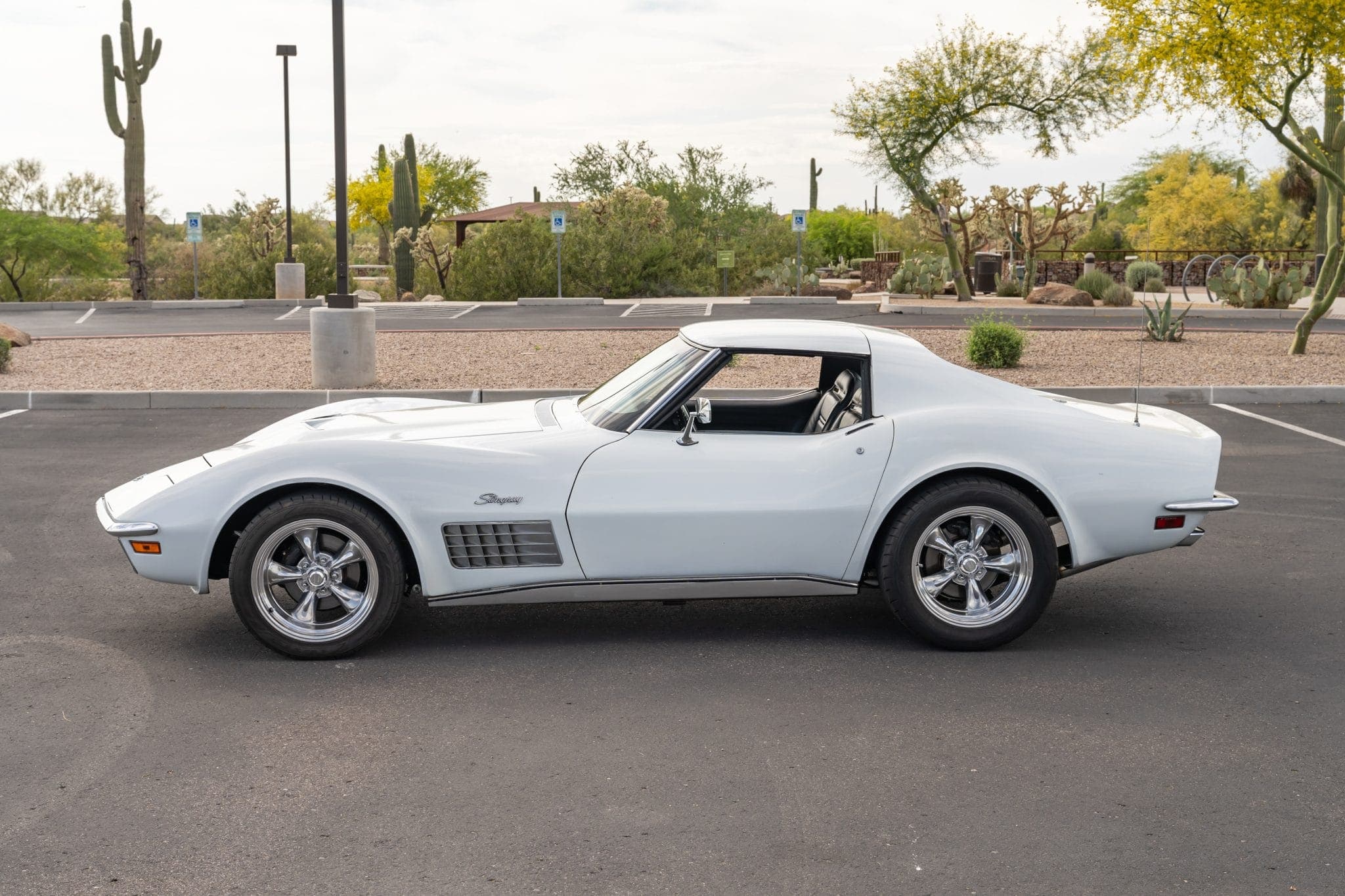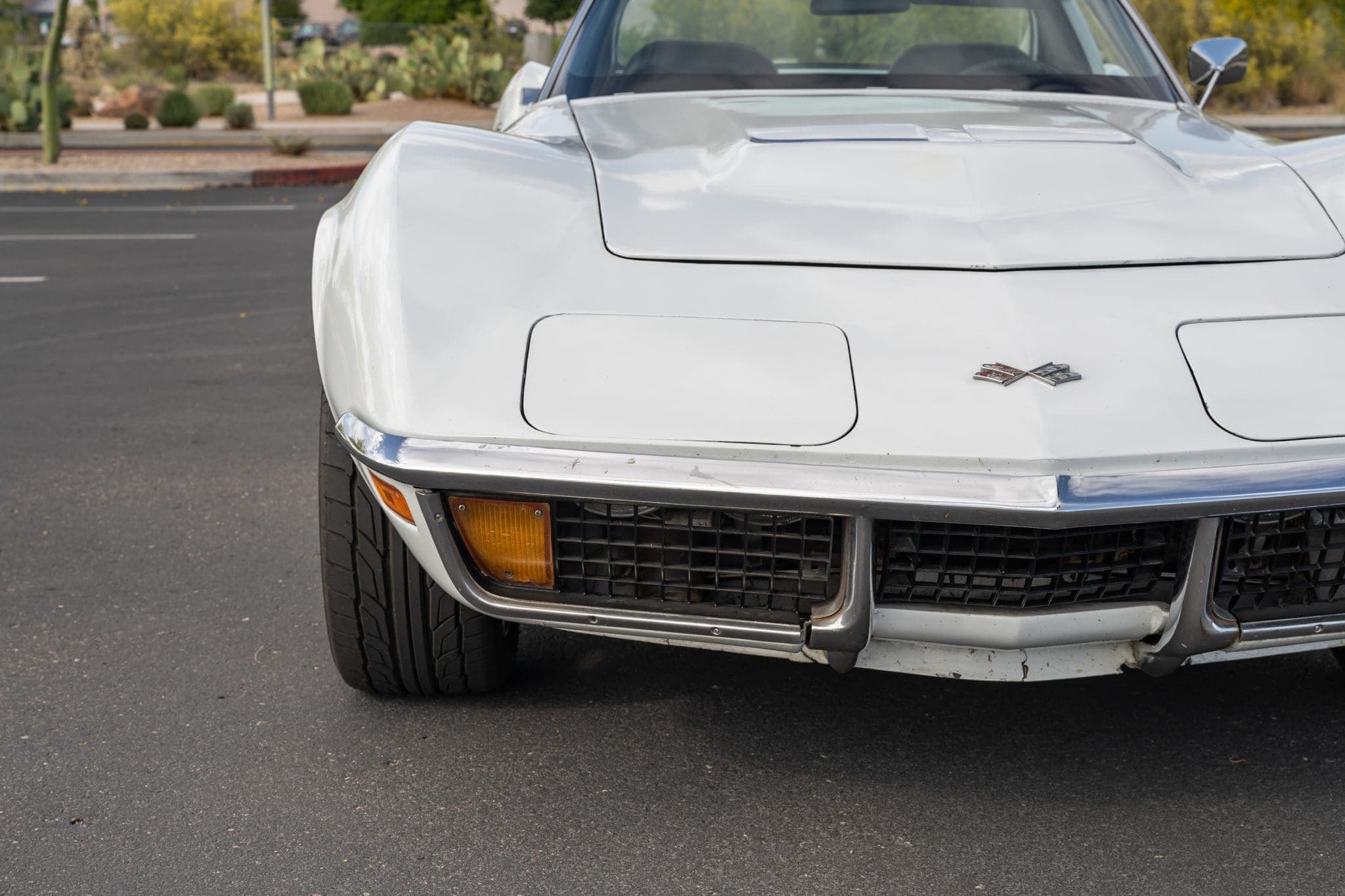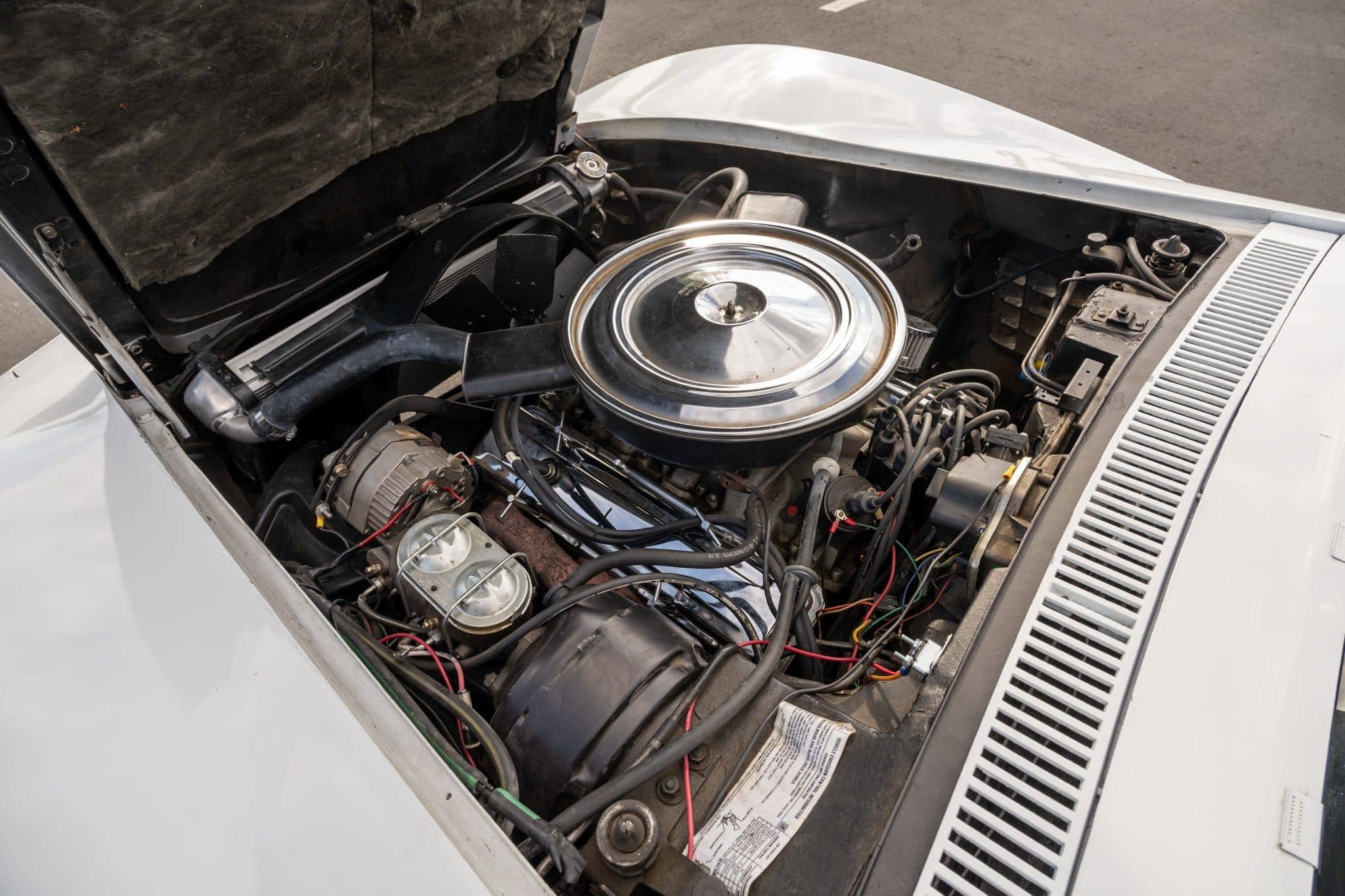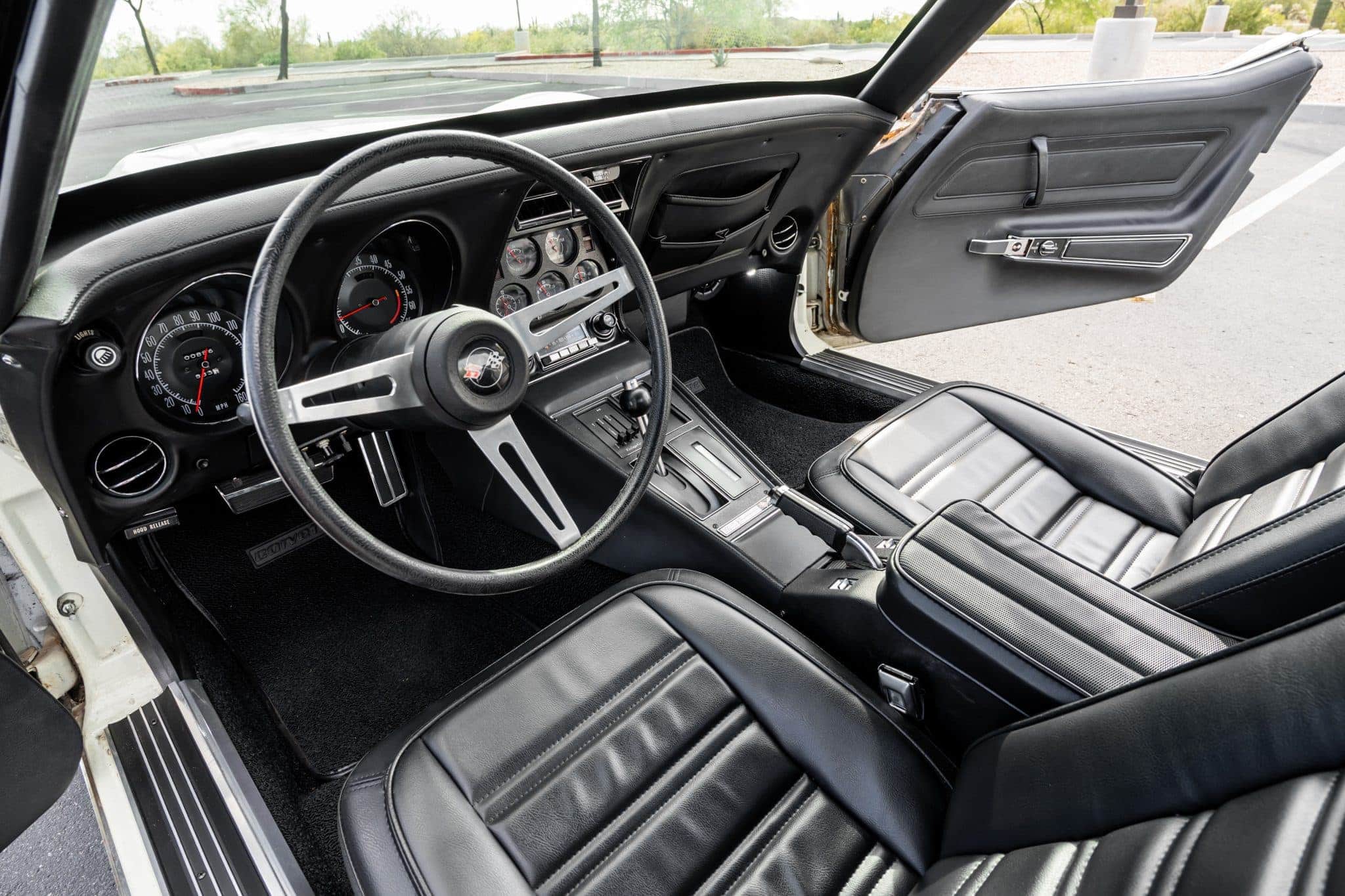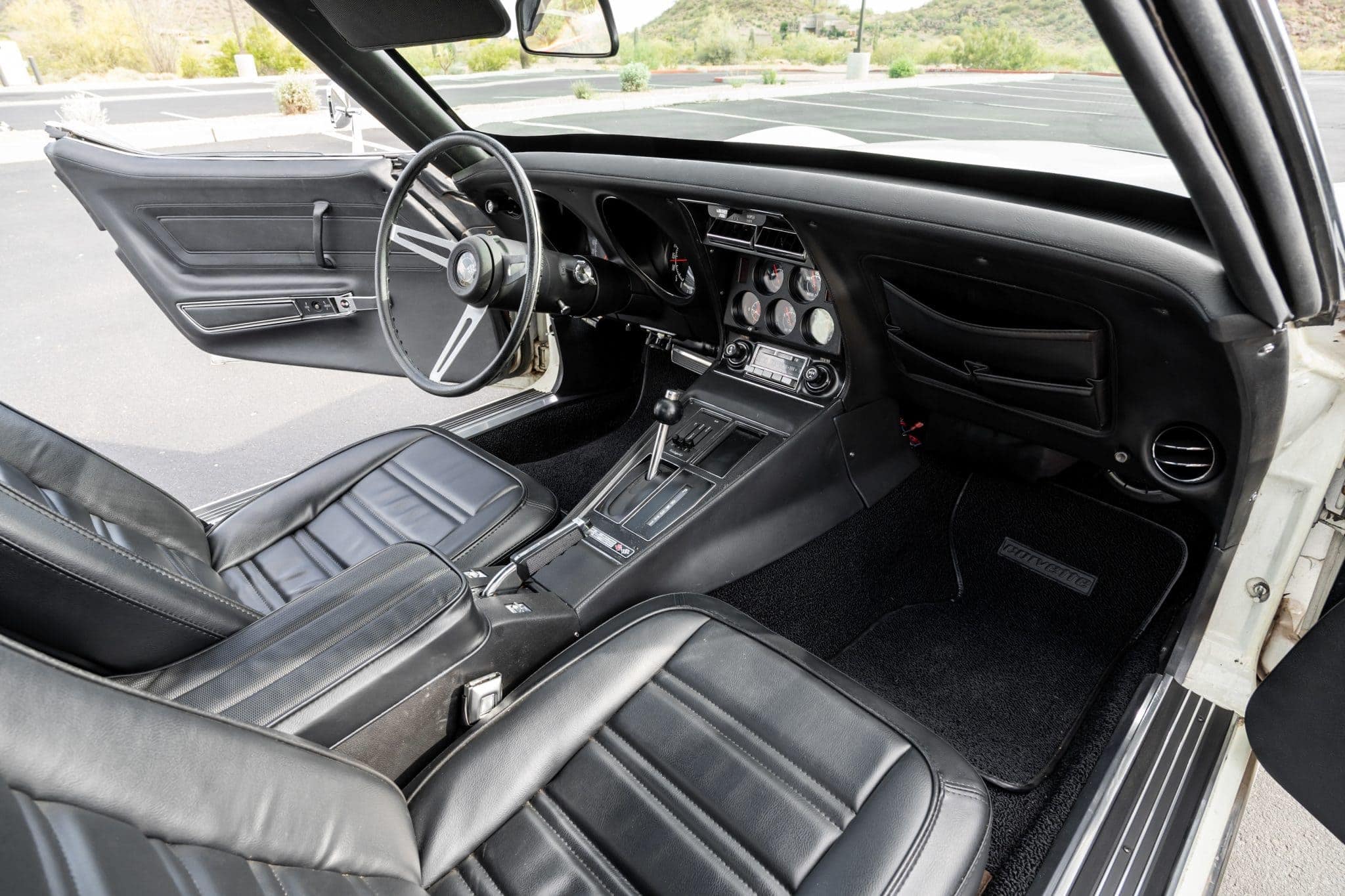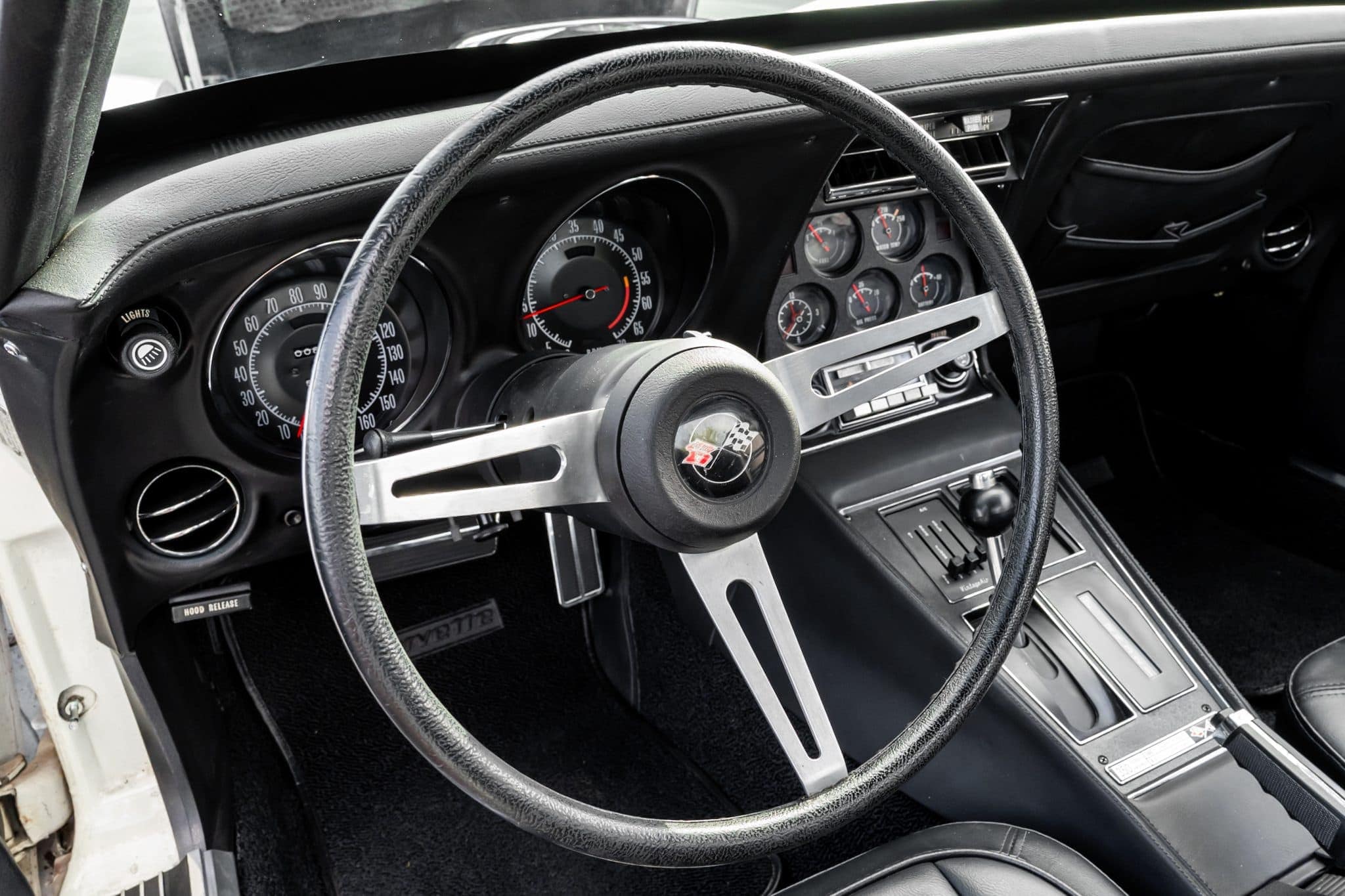The 1972 Chevrolet Corvette Coupe, part of the third generation of Corvettes (C3), represents a significant chapter in the legacy of America’s iconic sports car. This model year was notable for several reasons, including its design changes, performance characteristics, and the evolving automotive landscape of the early 1970s.
Design and Styling
The 1972 Corvette Coupe retained the distinct “Coke bottle” shape introduced with the C3 generation in 1968, characterized by its curvaceous fenders, sleek lines, and a low, aggressive stance. The 1972 model saw subtle yet impactful design updates:
- Chrome Bumpers: One of the last model years to feature chrome bumpers both front and rear, adding a touch of classic charm that enthusiasts adore.
- Eggcrate Grille: A revised front grille design, featuring an eggcrate pattern, which enhanced the car’s sporty look.
- Removable T-Tops: The Coupe model came with removable T-top panels, offering the exhilaration of open-air driving without committing to a full convertible.
Engine and Performance
The 1972 Corvette Coupe was available with several engine options, catering to a range of performance preferences:
- Base Engine: A 350 cubic inch (5.7L) V8 engine producing 200 horsepower, offering a balance of performance and drivability.
- Optional Engines: The LT1, a high-performance 350 cubic inch V8 delivering 255 horsepower, and the big-block LS5 454 cubic inch (7.4L) V8 with 270 horsepower, provided higher power outputs for enthusiasts seeking more muscle.
Despite the lower horsepower ratings compared to earlier years, the 1972 Corvette maintained respectable performance figures, with the LT1 and LS5 options capable of impressive acceleration and top speeds.
Transmission Options
Buyers could choose between a 4-speed manual transmission and a 3-speed Turbo Hydra-Matic automatic transmission. The manual option was favored by purists for its engaging driving experience, while the automatic catered to those preferring convenience and ease of use.
Interior and Comfort
The 1972 model’s interior featured updates aimed at enhancing driver and passenger comfort:
- Refined Dashboard: A redesigned dashboard layout improved ergonomics, with controls within easy reach and gauges positioned for optimal visibility.
- Comfortable Seating: Bucket seats with additional bolstering offered better support during spirited driving.
- Air Conditioning: Optional air conditioning made the Corvette more comfortable for daily driving and long-distance cruising.
Emissions and Regulations
The early 1970s marked the beginning of stricter emissions regulations, and the 1972 Corvette was among the first to be affected. Lower compression ratios and other modifications were implemented to comply with new standards, leading to reduced horsepower ratings. However, these changes also paved the way for more efficient and environmentally friendly engines in the future.
Legacy and Collectibility
Today, the 1972 Chevrolet Corvette Coupe is highly sought after by collectors and enthusiasts. Its blend of classic styling, robust performance, and historical significance makes it a treasured addition to any collection. The 1972 model holds a special place in Corvette history, bridging the gap between the high-performance muscle cars of the late 1960s and the more regulated, fuel-conscious vehicles of the mid-1970s.
The 1972 Chevrolet Corvette Coupe stands as a testament to the enduring appeal of the Corvette brand. With its timeless design, potent engine options, and a balance of performance and comfort, this model remains a symbol of American automotive excellence. Whether cruising down the highway or displayed at a car show, the 1972 Corvette continues to captivate enthusiasts and preserve its legacy as an iconic sports car.

